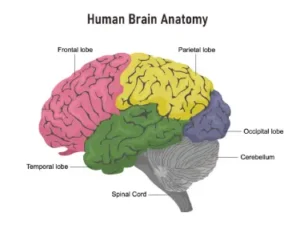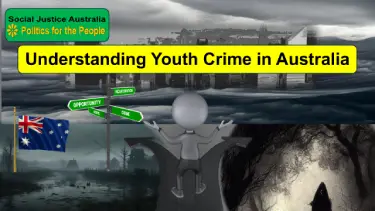Description
Explore youth crime statistics, the effects of neoliberalism, and how addressing root causes offers long-term solutions beyond incarceration.
Introduction
 Youth crime in Australia has become a pressing issue, with many regions reporting increasing rates of theft, violence, and repeat offenses. As the debate around youth crime intensifies, solutions vary—from tougher laws and longer sentences to programs focusing on rehabilitation. The rise of neoliberal policies over the past decades has worsened many of the root causes of youth crime, leading to systemic issues like economic inequality, reduced access to education, and cuts to essential social services.
Youth crime in Australia has become a pressing issue, with many regions reporting increasing rates of theft, violence, and repeat offenses. As the debate around youth crime intensifies, solutions vary—from tougher laws and longer sentences to programs focusing on rehabilitation. The rise of neoliberal policies over the past decades has worsened many of the root causes of youth crime, leading to systemic issues like economic inequality, reduced access to education, and cuts to essential social services.
This guide delves into the statistics of youth crime in Australia, explores the underlying causes, examines the impact of neoliberalism, and offers actionable solutions to address youth crime more effectively than incarceration.
What is Youth Crime?
Defining Youth Crime
Youth crime refers to criminal offenses committed by individuals under the age of 18. These crimes range from minor offenses, such as vandalism and petty theft, to more serious crimes like assault and robbery. How the Australian legal system handles youth crime depends on factors like the age of the offender and the severity of the crime, with more severe offenses often leading to juvenile detention.
Youth Crime Trends in Australia**
Youth crime trends in Australia have seen fluctuations over the past few decades. According to the Australian Bureau of Statistics (ABS), youth crime involving property offenses, such as theft and car-related crimes, has been on the rise in certain regions, particularly in Queensland. Violent crimes, while less common, have also seen increases in specific areas. The rise in repeat offenses among young offenders has become a growing concern, especially in states like Queensland, New South Wales, and Victoria.
Youth Crime in Each Australian State
Queensland’s Youth Crime Crisis
Queensland has experienced a surge in youth crime, especially in vehicle theft and burglaries. According to ABS data, the state has seen a 12% rise in youth property crime since the early 2000s. The Queensland Liberal National Party (LNP) has made youth crime a focal issue in its election campaigns, advocating for stricter laws, increased police presence, and harsher penalties.
However, critics argue that focusing solely on punitive measures ignores the root causes of youth crime and risks increasing recidivism.
New South Wales and Victoria
New South Wales (NSW) has seen fluctuations in youth crime rates, with a resurgence of violent crimes, including robbery and assault, in recent years. In Victoria, group-related youth crimes, such as gang violence and theft, have been rising in suburban areas, often correlating with economic disparity.
Both states have implemented community-based intervention programs aimed at preventing youth crime.
Western Australia and South Australia
Western Australia has also seen an increase in youth assaults and theft. South Australia has stable but concerning rates of youth crime, with Indigenous youth disproportionately represented. Despite stable crime rates, critics call for more funding for social services to prevent youth from entering the criminal justice system.
Underlying Causes of Youth Crime in Australia
Socioeconomic Disadvantage
A key driver of youth crime in Australia is socioeconomic disadvantage. Young people in poverty-stricken areas face numerous challenges, including limited access to education, job opportunities, and stable housing.
These factors often push young people towards crime, as a means of coping with or escaping difficult circumstances. In regions with high unemployment and limited economic mobility, youth crime rates are consistently higher.
Study and Data
– The Australian Institute of Criminology (AIC) found that youth in impoverished areas are 30% more likely to engage in property crimes, such as theft and vandalism, compared to those in wealthier areas.
Family Environment and Mental Health
Family dynamics, including domestic violence, neglect, and poor parenting, contribute significantly to youth crime. Additionally, untreated mental health issues, such as depression, anxiety, and conduct disorders, are major risk factors for criminal behaviour among youth.
Without early intervention, these issues often escalate, leading to involvement in the criminal justice system.
Substance Abuse
Substance abuse is another leading cause of youth crime. Young people struggling with alcohol and drug abuse are more likely to commit offenses, particularly property crimes, to support their addiction. Effective rehabilitation and substance abuse programs are essential in addressing this aspect of youth crime.
The Impact of Neoliberalism on Youth Crime
Neoliberal economic policies, introduced in Australia during the 1980s and 1990s, brought significant changes to public services, including cuts to social programs that provided support to disadvantaged communities.
These policies have been linked to rising crime rates, particularly among youth, who are often most affected by reductions in welfare, education, and mental health services.
Cuts to Social Services and Youth Crime
As neoliberal policies were implemented, Australia saw significant reductions in public spending on services such as education, housing, and youth support programs.
These cuts left vulnerable youth without the support structures that could help prevent them from turning to crime. Data from the Australian Bureau of Statistics (ABS) shows that, during the 1990s, youth involvement in property crimes, such as theft and vehicle-related offenses, began to rise.
For example, Queensland saw noticeable increases in youth crime during this period, particularly in disadvantaged areas where social services were reduced. https://www.aic.gov.au/sites/default/files/2020-05/tandi028.pdf
Economic Inequality and Youth Crime
The economic inequality worsened by neoliberal reforms has had a profound effect on youth crime rates. Studies from the Australian Institute of Criminology (AIC) show that areas with reduced access to social services experienced higher youth crime rates, particularly for property offenses.
The AIC emphasizes that social and economic disadvantage is a key driver of youth offending, with young people from low-income communities significantly more likely to engage in criminal activity compared to those from wealthier areas. https://www.aic.gov.au/publications/tandi/tandi265
Defining When a Child Has the Mental Capacity to Be an Adult
The question of when a child develops the mental ability to be treated as an adult is complex and involves both legal definitions and psychological development. In Australia, the age of criminal responsibility is set at 10 years old, meaning children under this age cannot be held legally responsible for criminal acts.
However, even after this age, whether a child has the maturity and understanding to be treated as an adult in legal terms is often debated.
Legal Perspective on Mental Capacity
In many legal systems, including Australia’s, children between the ages of 10 and 14 are presumed to be incapable of forming criminal intent—a concept known as doli incapax. This presumption can be rebutted if it is proven that the child understood the consequences of their actions.
For children aged 14 to 17, the legal system still treats them differently from adults, often focusing on rehabilitation rather than punishment.
In Queensland, for instance, youths aged 10 to 17 are dealt with under the Youth Justice Act 1992, which focuses on restorative justice approaches rather than purely punitive measures.
Psychological and Cognitive Development
 Psychologists argue that the brain, particularly areas involved in decision-making and impulse control (such as the prefrontal cortex), continues to develop until around age 25. According to research from the Australian Institute of Family Studies, adolescents often have diminished ability for reasoning and judgment compared to adults, making it difficult for them to fully grasp the consequences of their actions in the same way adults would.
Psychologists argue that the brain, particularly areas involved in decision-making and impulse control (such as the prefrontal cortex), continues to develop until around age 25. According to research from the Australian Institute of Family Studies, adolescents often have diminished ability for reasoning and judgment compared to adults, making it difficult for them to fully grasp the consequences of their actions in the same way adults would.
– Cognitive Capacity: By mid-adolescence (around age 15-17), many youths develop reasoning skills like adults. However, their ability to make sound judgments, especially in emotionally charged situations, is still immature due to ongoing brain development.
– Emotional and Social Development: Adolescents are more influenced by peer pressure, emotional swings, and the desire for immediate rewards. This can contribute to risky behaviour and criminal acts, often without fully understanding the long-term consequences.
International Perspectives on Age and Maturity
Globally, the age of criminal responsibility varies, reflecting differing views on when a child can be considered mentally capable of adult responsibility. For example, in Sweden and Norway, the minimum age is 15, whereas in Germany, it is 14. These countries adopt a more rehabilitative approach to youth crime, recognizing that young people do not have the same maturity and decision-making ability as adults.
The Challenge of Defining Adult Mental Capacity in Youth
While legal systems set specific ages for criminal responsibility, the science of brain development shows that children and adolescents often lack the full mental ability of adults. Therefore, policies focusing on rehabilitation, rather than treating young offenders as fully responsible adults, align better with their cognitive and emotional development.
Benefits of Addressing the Causes of Youth Crime vs. Incarceration
Reducing Recidivism Through Rehabilitation
Studies have shown that addressing the root causes of youth crime—such as mental health issues and socioeconomic disadvantage—is more effective in reducing reoffending than incarceration. Programs focusing on rehabilitation, mental health support, and job training help young offenders reintegrate into society.
Study and Data:
– A University of Sydney Law Faculty study found that juvenile detention rates increased by 15% post-neoliberal reforms, yet recidivism remained high, with 60% of young offenders reoffending within two years of release.
Economic Benefits of Prevention Over Punishment
Prevention programs, particularly those targeting at-risk youth, are more cost-effective than long-term incarceration. The cost of detaining a young person far exceeds the cost of providing community-based rehabilitation programs.
Social Impact and Community Strengthening
Focusing on early intervention and addressing the root causes of youth crime not only reduces crime rates but strengthens communities by providing young people with the tools to succeed. Communities benefit from reduced crime, better educational outcomes, and stronger social cohesion.
Queensland LNP’s Political Focus on Youth Crime
LNP’s ‘Tough on Crime’ Approach
The Queensland LNP has adopted a ‘tough on crime’ stance, advocating for increased police presence and harsher penalties for young offenders. However, critics argue that this punitive approach does not address the root causes of youth crime, leading to higher recidivism rates.
Criticisms of the LNP Approach
Studies show that focusing solely on incarceration increases recidivism rates and does not reduce crime long-term. Critics argue that investing in rehabilitation, education, and mental health programs would be a more effective solution to reduce youth crime in Queensland.
Long-Term Solutions to Youth Crime
Investing in Education and Job Opportunities
Providing disadvantaged youth with education and job opportunities is one of the most effective ways to prevent crime. Vocational training, apprenticeships, and scholarships offer pathways out of poverty and into stable employment, reducing the likelihood of criminal behaviour.
Strengthening Social Services
Governments need to restore funding for essential services such as mental health care, family support programs, and youth rehabilitation. These services play a critical role in preventing youth from becoming involved in crime in the first place.
Adopting Restorative Justice Approaches
Restorative justice focuses on repairing harm and encouraging offenders to take responsibility for their actions. Programs such as community service and victim-offender mediation have been shown to reduce recidivism and help young offenders reintegrate into society. Solving Youth Crime: https://youtu.be/QYWPyiZIpV8?si=7HObyfIiVbR9sZRF
Summary
Youth crime in Australia is a complex issue influenced by socioeconomic factors, mental health challenges, and policy decisions. Neoliberalism’s focus on reducing social services and increasing economic inequality has contributed to rising youth crime rates.
However, evidence suggests that addressing the root causes of youth crime through rehabilitation, education, and preventative programs offers a more effective long-term solution than punitive measures like incarceration.
Question for Readers
“What do you believe is the most effective approach to reducing youth crime in Australia—harsher laws or addressing social inequalities?”
Call to Action
If you found this article insightful, share it with your community and explore more about how Australia can address youth crime prevention on Social Justice Australia: https://www.socialjusticeaustralia.com/
Visit our “Reader Feedback” menu. Let us know how our content has inspired you. Submit your testimonial and help shape the conversation today!
Additionally, leave a comment about this article below.
Referrence:
Positive Youth Justice: Solving the youth crime ‘problem’ with children first solutions: https://www.cycj.org.uk/positive-youth-justice-solving-the-youth-crime-problem-with-children-first-solutions/
Many Interesting Resources Here: https://www.cycj.org.uk/resources/

